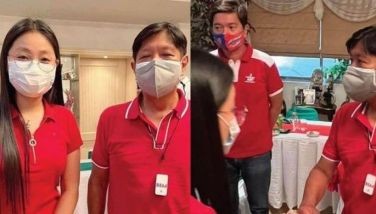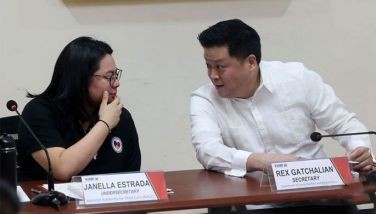RP urged to implement disaster preparedness program
MANILA, Philippines - An official of the World Health Organization (WHO) urged the Philippine government to implement a comprehensive disaster preparedness program to prevent a repeat of the destruction left by typhoons “Ondoy” and “Pepeng” last year.
Dr. Arturo Pesigan, WHO-Western Pacific Region’s technical officer for Emergency and Humanitarian Action, underscored the Philippines is prone to natural disasters and calamities because of the country’s geographic and demographic conditions in the Pacific.
He said that every year, an average of 22 typhoons hit the Philippines while 22 of the 300 volcanoes in the country are active.
Except for Palawan, the rest of the country is situated in the Eurasian and Pacific plates, a geographical area popularly known as the Pacific Ring of Fire.
Pesigan said the country’s demographic conditions also contribute to its “vulnerability” to calamities.
These include rapid population growth, change in land-use patterns, migration to urban areas, environmental degradation and unplanned urbanization, he said.
Pesigan said that within the region, the Philippines “really has a lot of headway in terms of preparedness.”
“If you compare to other countries in our level, perhaps (it) is recognized in some international fora that the Philippines is actually ready. It’s a leader in terms of preparedness in certain aspects (and) that’s a good sign,” Pesigan told a health forum organized by the Philippine College of Physicians.
Pesigan, however, maintained that despite these factors, “there’s still a lot of things that need to be worked out” by the government to prevent another Ondoy and Pepeng.
To effectively mitigate the impacts of disasters, Pesigan underscored the need for the government to come up with “protocol to guide us in our emergency response efforts.”
He added that an “emergency response/operation center” should also be established to ensure systematic implementation of efforts and effective assessment of the impacts of disasters.
Pesigan said the Philippines is “rich in human resources” but the roles of volunteers must be clearly identified and they must also be trained adequately to “maximize and optimize” them in times of emergency.
He also called on the media to be an effective tool in response operations by reporting on “immediate and accurate health information” rather than focusing on appeals for donations of infant formula and unessential medicine.
Pesigan said the media could also help clarify the myth that dead bodies could trigger an outbreak of diseases to prevent public panic.
“Know where you bury the dead so that in the future, when there is a need to exhume them, you can do it (properly),” he added.
Pesigan warned the conduct of critical incident stress debriefing (CISD) on a victim immediately after a disaster struck might also be harmful if no follow-up therapy is done.
He said local government units, especially those in calamity-prone areas, should be trained and properly equipped in disaster response.
- Latest
- Trending

































